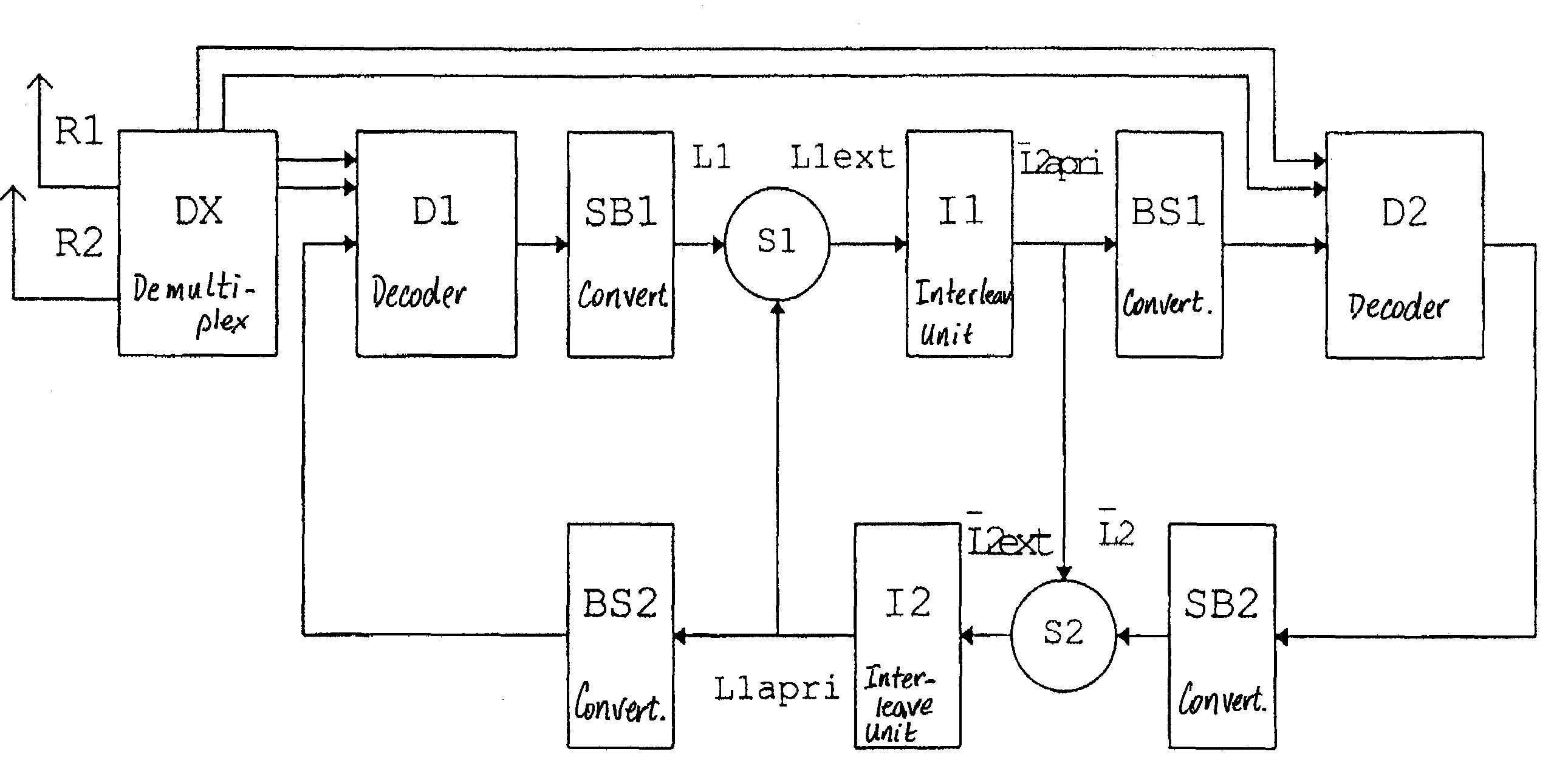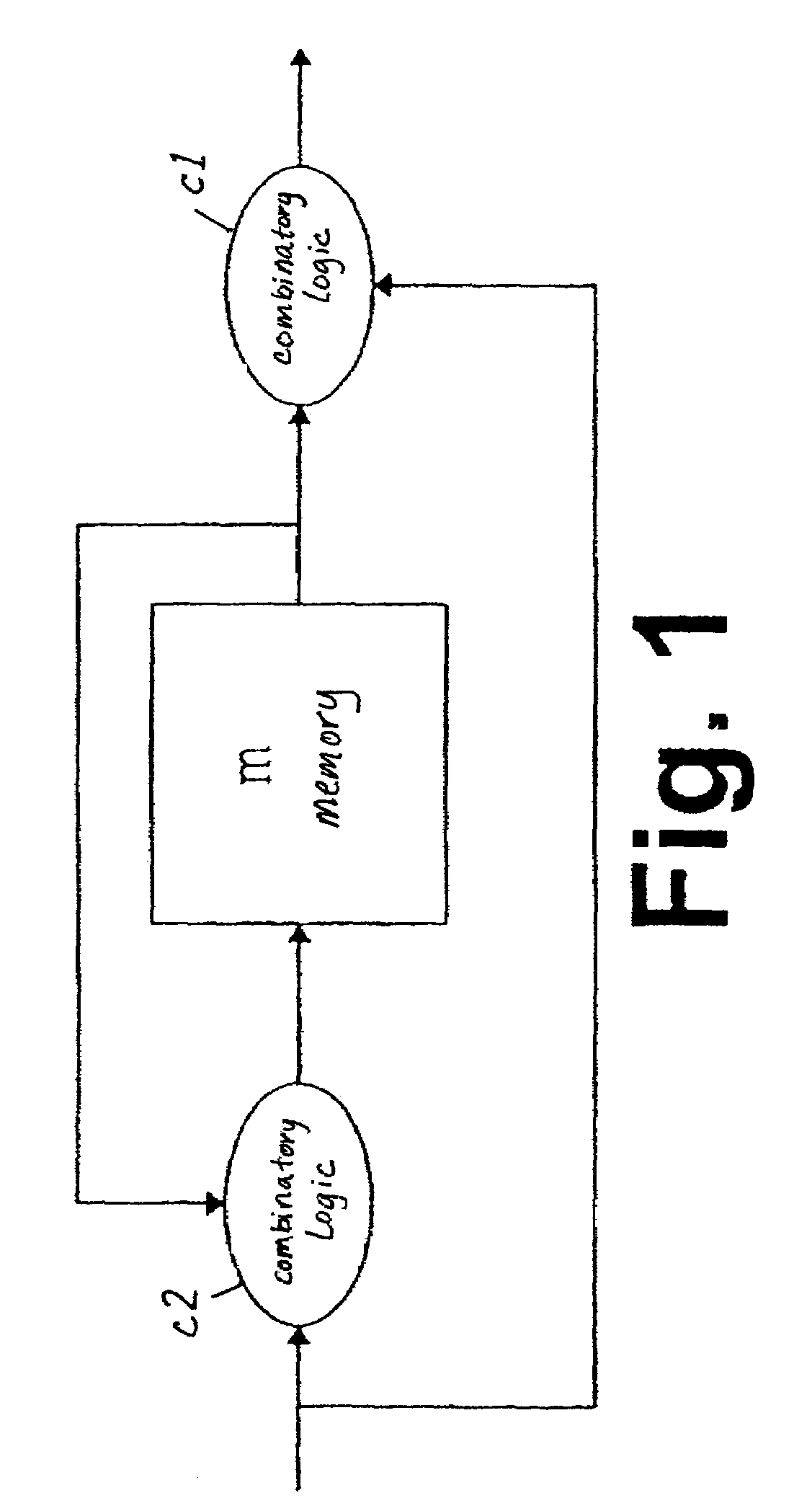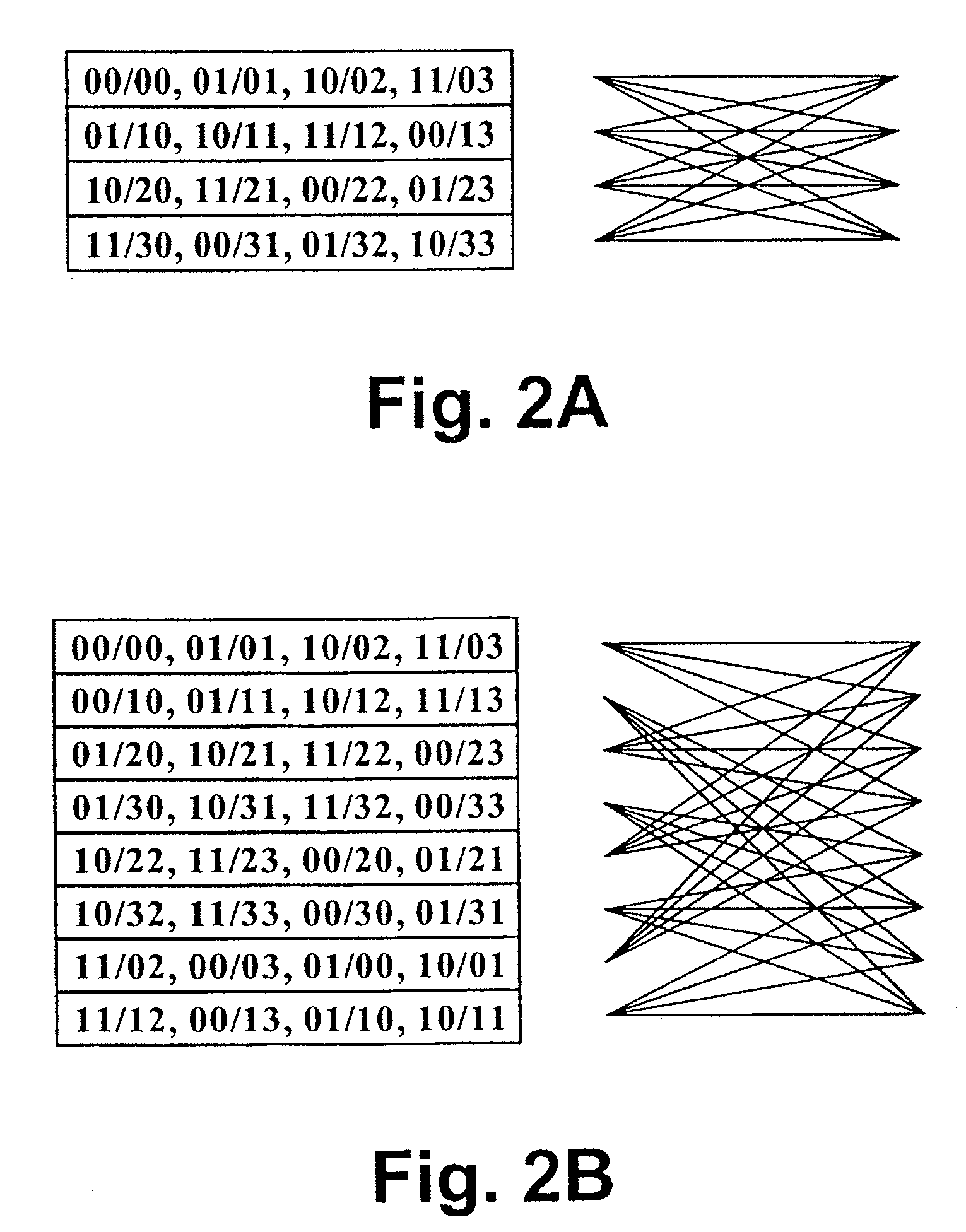Concatenated space-time coding
- Summary
- Abstract
- Description
- Claims
- Application Information
AI Technical Summary
Benefits of technology
Problems solved by technology
Method used
Image
Examples
Embodiment Construction
[0084]In the following, preferred embodiments of the coding and decoding method and apparatus according to the present invention will be described on the basis of a multiple antenna wireless communication system such as a GSM or future WCDMA communication system.
[0085]FIG. 1 shows a general structure of a recursive encoder. Turbo codes require recursive convolutional encoders. An implementation of recursive component codes represents a distinguishing feature of such Turbo codes. Generally, systematic or non-systematic codes can be used. The use of systematic codes simplifies the decoder but has no effects on the attainable performance. According to FIG. 1, the recursive encoder comprises a first combinatory logic c1 by which an input signal or information is combined with an output signal information at the output of the recursive encoder. Furthermore, a second combinatory logic c2 is provided at the input side for combining a signal or information fed back from the output with the ...
PUM
 Login to View More
Login to View More Abstract
Description
Claims
Application Information
 Login to View More
Login to View More - R&D
- Intellectual Property
- Life Sciences
- Materials
- Tech Scout
- Unparalleled Data Quality
- Higher Quality Content
- 60% Fewer Hallucinations
Browse by: Latest US Patents, China's latest patents, Technical Efficacy Thesaurus, Application Domain, Technology Topic, Popular Technical Reports.
© 2025 PatSnap. All rights reserved.Legal|Privacy policy|Modern Slavery Act Transparency Statement|Sitemap|About US| Contact US: help@patsnap.com



